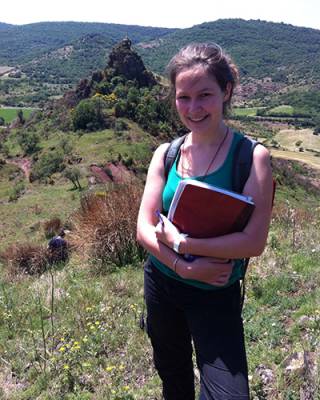“Supercritical versus subcritical bedforms, facies, geometry and architecture, Eocene Ainsa and Banaston systems, Ainsa basin, Spanish Pyrenees: implications for reservoir heterogeneity.”
PhD project title:
Supercritical versus subcritical bedforms, facies, geometry and architecture, Eocene Ainsa and Banaston systems, Ainsa basin, Spanish Pyrenees: implications for reservoir heterogeneity.
 Project description:
Project description:

A new approach to understanding the stratigraphic development of submarine fans, including their internal architecture and stacking patterns, is to consider the relative importance of deposition from supercritical and subcritical flows. In recent years, many researchers have focussed on supercritical- and subcritical-flow deposits using flume-tank experiments (e.g., Cartigny et al., 2011, 2014; Postma et al., 2014), or from direct observations on presently active deep-water systems (e.g., Hughes et al. 2012).
My research focusses on the study of supercritical/subcritical flows and the criteria for their recognition in the stratigraphic record of the Ainsa and Banaston systems in the Eocene Ainsa Basin deep-marine deposits (Spanish Pyrenees). An important aim of the project is to develop criteria for recognition of supercritical/subcritical flow deposits, to understand the relative importance of such processes in submarine fans and related systems. Geostatistical analysis of bed thickness will also be undertaken in order to investigate its use as a tool in palaeo-environmental interpretations. A spin-off from this research will be to improve the understanding of hydrocarbon-reservoir heterogeneity such as porosity-permeability characteristics of sandy deposits and the likely distribution of sands in deep-water settings.
Part of the research project involves (i) granulometric studies through individual sandstone beds, both from core (detailed sedimentary logging and evaluation of Ainsa core material) and proximal (Ainsa Basin) to distal (Jaca Basin) outcrops and (ii) re-evaluation of the Bouma sequence (divisions Ta-e). To complete the study, high-resolution stratigraphic analysis of key outcrops (Ainsa and Banaston system) is required.
.
 Close
Close

